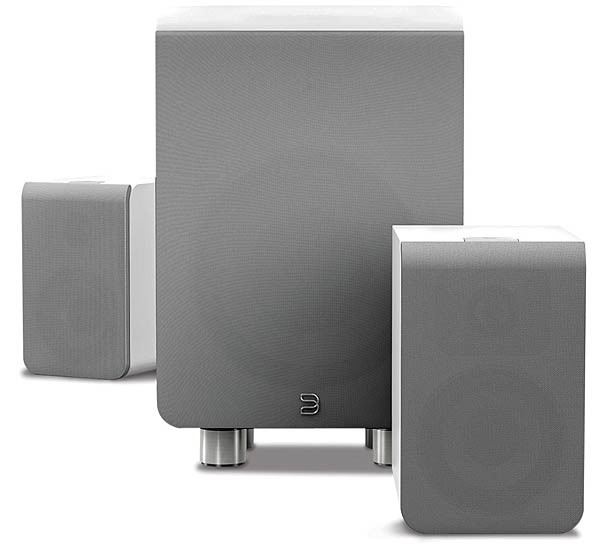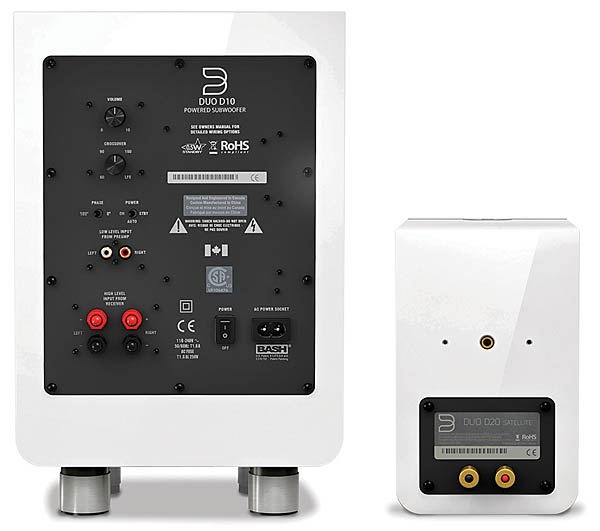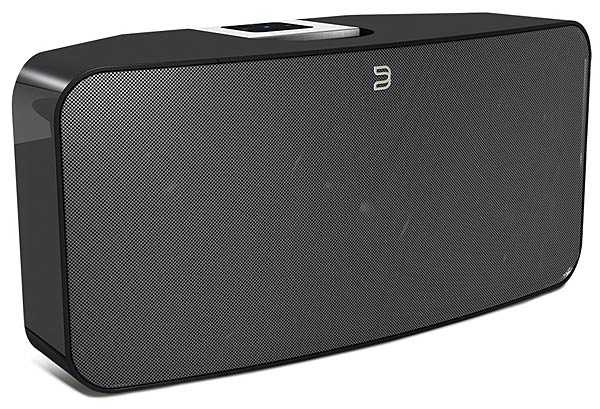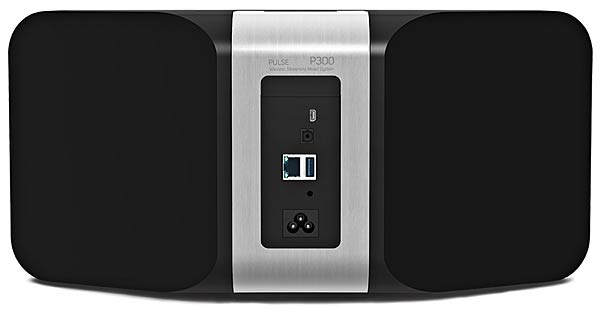Bluesound Digital Multiroom Audio System Page 2

The Navigation Drawer also provides access to the New Player Setup and the Configure Player screens. New Player Setup is how you begin to create a system or add players to an existing one, and Bluesound is to be commended for keeping things simple and straightforward. The Configure Player screen also offers ways to tweak or troubleshoot individual players in a Bluesound system. Although the players share many of the same configuration capabilities (setting the player’s name, for instance), some parameters are unique to each player, including the Rip/Encode settings in the Vault and configuration of the amp output in the PowerNode (the default characteristics are specifically set for the Bluesound Duo).
If you have only a single player or two, the right-hand drawer will seem like a letdown compared with the others because this screen is mainly for selecting which player (or zone) the app is going to control. In addition to allowing for individual volume control of each player in the system, this screen lets you group players and make them play the same source simultaneously.
If a FLAC File Falls in the Woods, Does It Make a Sound?
My real-life spacing and placing of the Bluesound players around my house proved once again that the reliability of a Wi-Fi-based multiroom audio system is only as good as the Wi-Fi system in your house. As far as I could tell, Wi-Fi connectivity of the PowerNode and the Pulse was easily on par with that of other Wi-Fi devices I’ve used. Of course, Wi-Fi wasn’t an issue with the Ethernet-only Vault. In the first week or two of using the Bluesound system, I did notice that the players didn’t always recognize one another or that they sometimes locked up when grouped together—in which case, I had to reboot all the players and restart the app. After a firmware update, however, these particular problems didn’t occur again.
Eventually I hauled all the gear into my main listening room, which essentially gave me three Bluesound player systems to compare. I connected the Vault to a Sony STR-DA5800ES A/V receiver playing through a pair of Legacy Harmony speakers with an SVS SB13-Ultra subwoofer. I set up the PowerNode with the Duo sub/sat system and placed it along with the Bluesound Pulse on a BDI cabinet in the front of the room and configured both systems to connect wirelessly.

When I listened to the various players in the Bluesound ecosystem, it was clear (no pun intended) that this is a high-performance audio distribution system. Even via Wi-Fi, the sound quality is virtually indistinguishable from that of traditional components connected with optical cables. The system’s responsiveness is especially noteworthy. Commands, such as play or pause, were carried out within a fraction of a second, while the volume control responded equally fast. Sometimes, distributed audio systems suffer from latency issues, but the Bluesound system fortunately wasn’t afflicted. I controlled each player by switching between players within the same app and experimented with them singly as well as grouped together.

As a high-rez audio source component, the Bluesound Vault was stellar. Although ergonomically it’s not the most convenient component to fit in an A/V rack, it certainly holds its own against other high-rez digital audio sources. CDs ripped to FLAC files and stored on the Vault’s internal hard drive were impeccable, and I appreciated the Vault’s ability to function as a NAS drive with file access (both read and write) from computers on the home network—especially when purchases from HighResAudio are set up to download automatically to the hard drive in the Vault. Sure, the 1 TB of storage in the Vault can fill up fast if you’re downloading a lot of high-rez music (albums from HighResAudio can be as large as 3 gigabytes), but it will be easy to transfer those files from the Vault to another drive on your network. As a matter of fact, since the single hard drive in the Vault doesn’t have any RAID capability, Bluesound highly recommends that you make a backup of any files stored in the Vault.
The 50-watt amp in the PowerNode was more than capable of bringing the Duo satellite speakers to life. And with the Duo’s subwoofer connected to the PowerNode’s sub out, it was shocking how well the combination was able to fill my 12 x 24-foot theater room with a very wide soundstage and bass that was hard-hitting without being boomy. Compared with the much larger Legacy speakers as well as with the smaller Pulse, the Duo system was a bit bright—but not aggressively so. The PowerNode/Duo package was certainly a delight to listen to with “Singing Bowl” from the Torque Trio’s Osmosis album, which I downloaded from HighResAudio. In addition to quick and taut piano notes, the Torque Trio uses a singing bowl that resonates through much of the song. The playback was superb, with the slow decay of the singing bowl’s tones floating in a very broad space in the room.

It’s not surprising that the Bluesound Pulse wasn’t capable of keeping up with the powerful bass output of the Duo system. Nor did it have the wide stereo separation or the top-end clarity of the Duo’s satellites. On the other hand, it’s a mighty fine desktop speaker system that amazingly didn’t get lost in my large listening room. Sitting on top of a BDI console, the Pulse was a bit heavy in the midbass, but vocal reproduction was otherwise smooth and natural. My daughter and I spent quite some time listening to Bonnie Raitt’s Slipstream album; were we not pitting the $699 Pulse directly against the $1,700 PowerNode/Duo system, we would have found little to complain about. With any system, of course, the performance will depend heavily on where it’s placed. Also, to be fair, the Pulse is really intended for a kitchen or a bedroom, for example, and wasn’t designed to fill a large theater room.

Conclusion
Whether the fact is openly admitted or not, any wireless distributed audio system eventually gets compared with Sonos. There’s good reason for that, too, because Sonos, after about 10 years in the market, has done so many things right when it comes to ease of setup, variety of features, and smoothness of user interfaces. The Bluesound folks told me up front that they’re not trying to come up with a “Sonos killer,” as some other companies have aspirations for. Everyone I spoke with at Bluesound said that, given their combined experience and skills when it comes to high-end music performance, they felt they could design a streaming music system that audiophiles not only can accept but also can wholeheartedly embrace. They’ve definitely accomplished that goal. Usually when I refer to a streaming music system, I eventually have to add the caveat that goes something along the lines of “it’s great for a secondary music system…” The biggest praise I can give the Bluesound system is that this is one of the few streaming audio systems you can use as a main two-channel audio system. Much of the time, being an audiophile is—to put it bluntly—a pain in the ass. A big part of the popularity of digital music downloads, portable music players, and streaming music services is that they make it so easy to listen to music. The beauty of the Bluesound system is that it gives you all of the sound quality gains without any of the audiophile pains—and that makes for one streaming good time.





























































